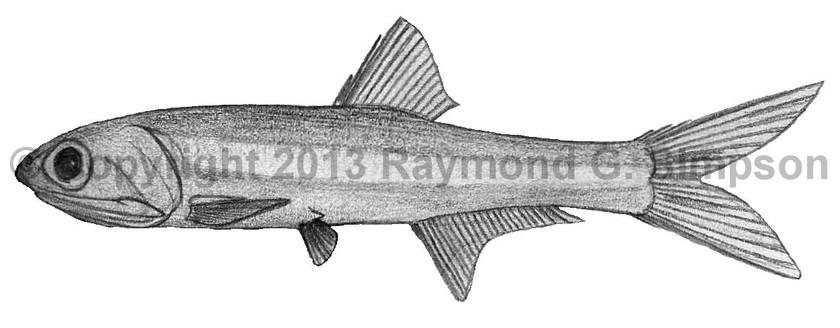
Common Name
Bermuda Anchovy
Year Described
Goode, 1874
Identification
Dorsal Fin: 13-15
Anal Fin: 21-25
Pectoral Fin: 12-14
Gill Rakers: 17-20 upper, 23-26 lower
Vertebrae: 41-42
Lateral Line Scales:
Body elongate and laterally compressed. Snout conical and 3/4 eye diameter in length. Mouth very large and inferior. Maxilla tip extends well over preoperculum (to beyond edge). Teeth small. Suborbital bone larger than eye diameter. Pseudobranch shorter than eye diameter (does not reach onto operculum). Dorsal fin origin a little past midpoint of body with a concave rear margin. Pectoral fin long, low and almost reaches pelvic fin base. Pelvic fin a bit closer to anal fin base than pectoral fin base. Pelvic fin with seven rays. Anal fin origin under middle of dorsal fin and has a long base. Caudal fin forked. Anus closer to pelvic fin base than anal fin origin. Scales cycloid and deciduous. Lateral line absent.
Color
Body translucent with a wide (about 3/4 eye diameter) silvery stripe that does not narrow significantly. Fins clear.
Size
Maximum size to 75mm TL.
Habitat
An inshore species found in clear marine waters. Schooling.
Range
Endemic to Bermuda.
References
Hildebrand, S.F. 1964. Engraulidae and Clupeidae (pp. 152-454). In: Fishes of the Western North Atlantic. Mem. Sears Fnd. Mar. Res. 1 (Vol. 3): 1-630.
Other Notes
Closely related to Anchoa lamprotaenia but the only Anchoa found around Bermuda.